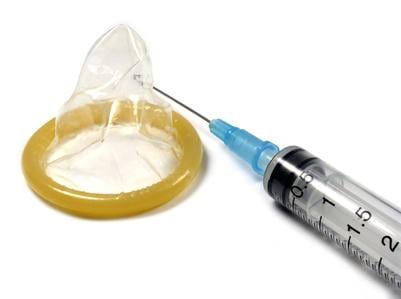America’s history is full of women fighting for the rights to control their bodies. Many historically significant women, including activist Margaret Sanger, and other women’s rights activists since have worked to ensure that women have a right to control their own bodies and prevent pregnancy, reports the Legacy 98 website, a women’s rights advocacy and history organization. As a woman today, you have not one but many options when it comes to pregnancy prevention. As you select your birth control method, explore your options carefully. Choose the one that is right for you to ensure that you wait until you are ready to start that family.
Abstinence
While not the most popular choice, abstinence is the only 100 percent effective method of birth control, reports Planned Parenthood. If you want to make absolutely certain that you do not get pregnant, then abstinence may be the choice for you. Many high schools elect to teach abstinence as the only method of birth control, as they feel that it discourages teens from engaging in sex before they are emotionally ready.
Condom
If you are not engaged in a monogamous sexual relationship, then you should be using a condom. When couples use the condom properly, the method is highly effective in preventing pregnancy, reports the Mayo Clinic. Condoms also prevent the spreading of sexually transmitted diseases. To make sure you are protected, don’t rely on your partner, but opt instead with a female condom. These less-popular condoms allow women to take protection into their own hands and ensure that they are safe from unwanted pregnancy and potentially deadly contractible diseases.
Birth Control Pill
Many women opt for the birth control pill because it is minimally invasive. Many brands also offer additional benefits, such as clearer skin or lighter periods. The birth control pill prevents the release of an egg, making pregnancy nearly impossible. The biggest downside of using the pill is that you have to remember to take it daily. If you miss a dosage, the effectiveness of the product is dramatically decreased. If you are a busy, always-on-the-go girl, the constrictive pill may not be your optimum choice.
Birth Control Injection
The birth control shot is commonly marketed under the name Depo-Provera. This birth prevention technique is a good choice for women who do not trust themselves to take their daily pill. Users receive a shot in the arm that lasts for a full three months.
Birth Control Patch
The birth control patch is another option for those who wish to avoid the daily hassle of pill taking. Users simply place a patch on their skin. This patch releases hormones through the skin that, like the birth control pill, prevent ovulation. The effectiveness of this birth control method depends in part upon weight. According to Planned Parenthood, if you weigh more than 198 lbs, this method will not effectively prevent you from becoming pregnant.
Vaginal Ring
The vaginal ring, marketed under the name NuvaRing, is a hormone-releasing ring that, like the pill and the patch, is intended to prevent ovulation. Users place the ring in their vagina at the beginning of the month, leave it in for three weeks and remove it during the final week. Planned Parenthood reports that fewer than 1 out of 100 women who use this method of birth control end up pregnant; however, some over-the-counter (OTC) and prescription medications can decrease effectiveness, so users should always consult their doctor prior to adding any medicines to their regimen.
Withdrawal Method
The withdrawal method is a passive, and often ineffective, form of birth control. This method, which involves the removal of the penis prior to ejaculation, relies on the principle a that woman cannot get pregnant without the deposit of semen. While this method is more effective than not making a birth control attempt at all, it is not commonly recommended as a reliable method as semen can still sneak through in pre-ejaculate matter. This method has a 18 to 19 percent failure rate, reports the American Pregnancy website.
Photo Credit
- condom and syringe image by NatUlrich from Fotolia.com





